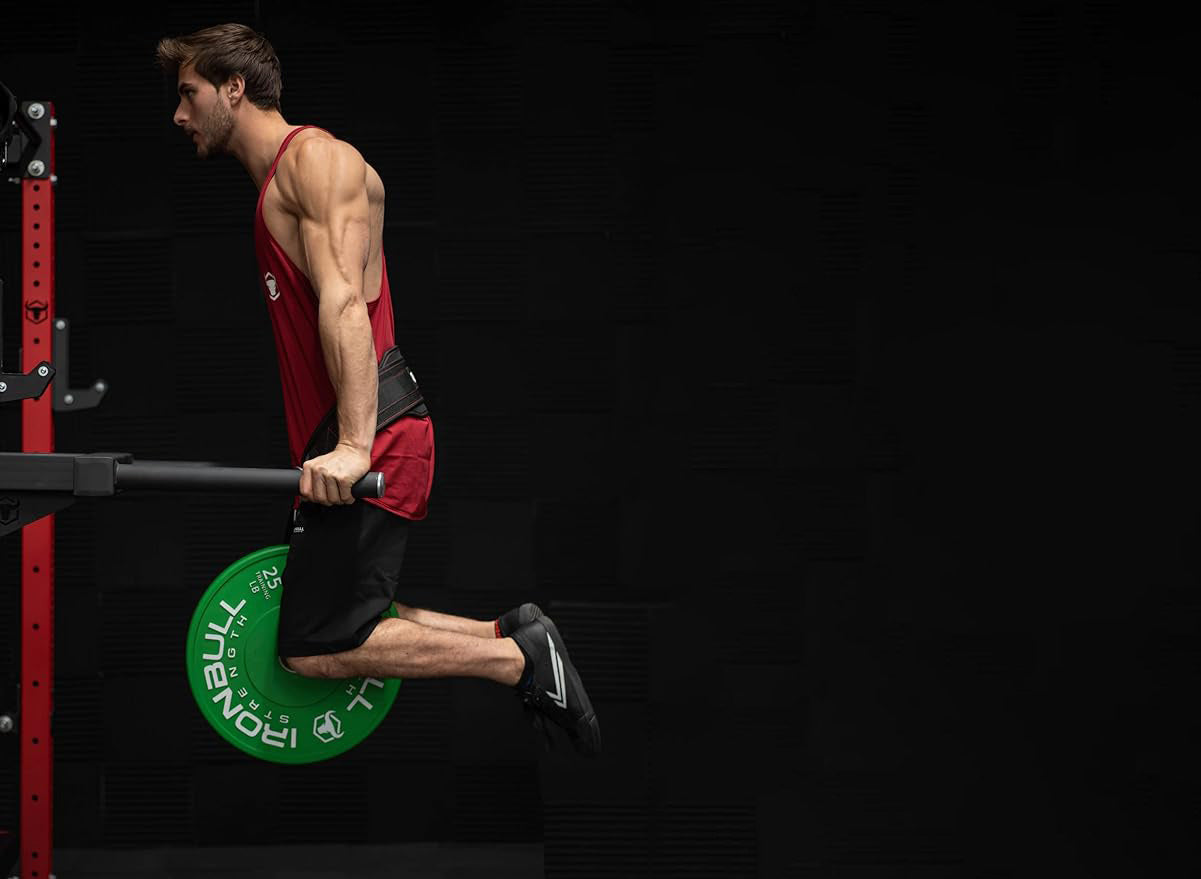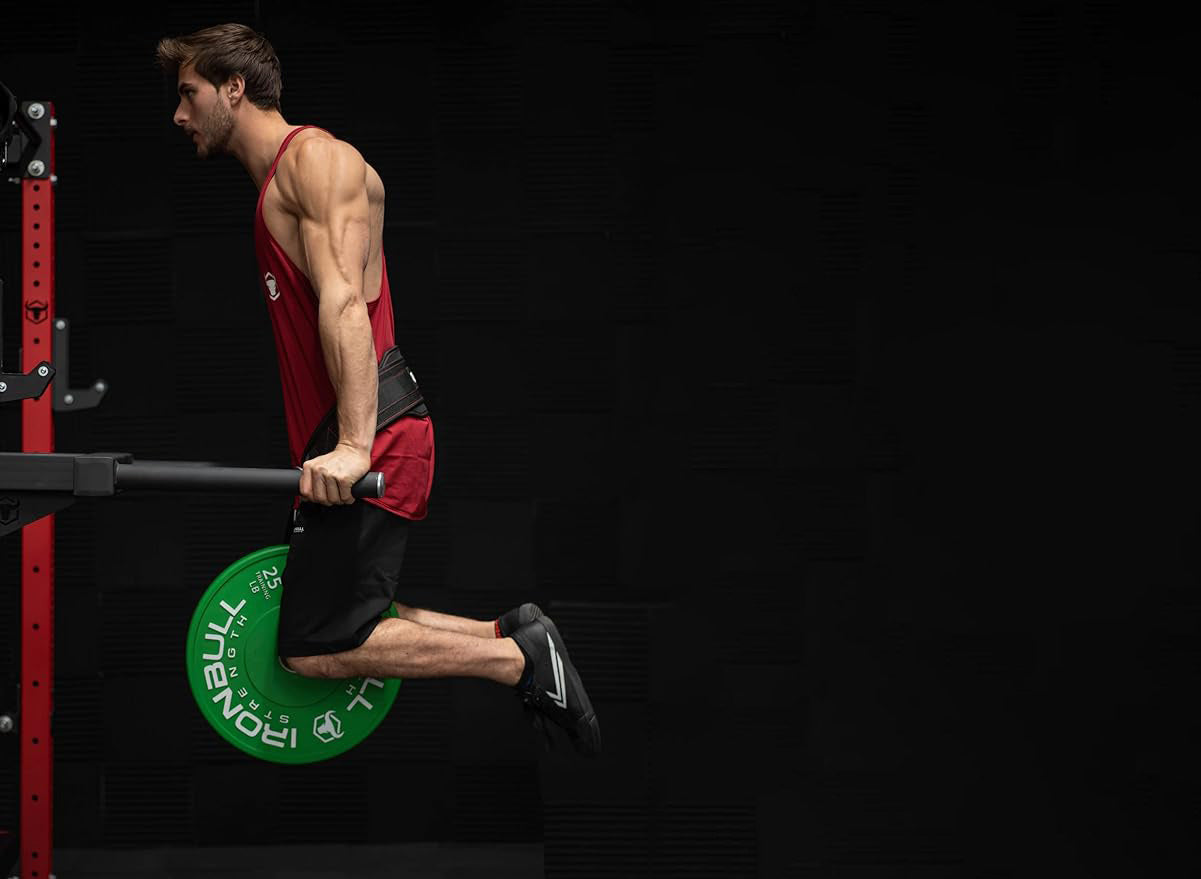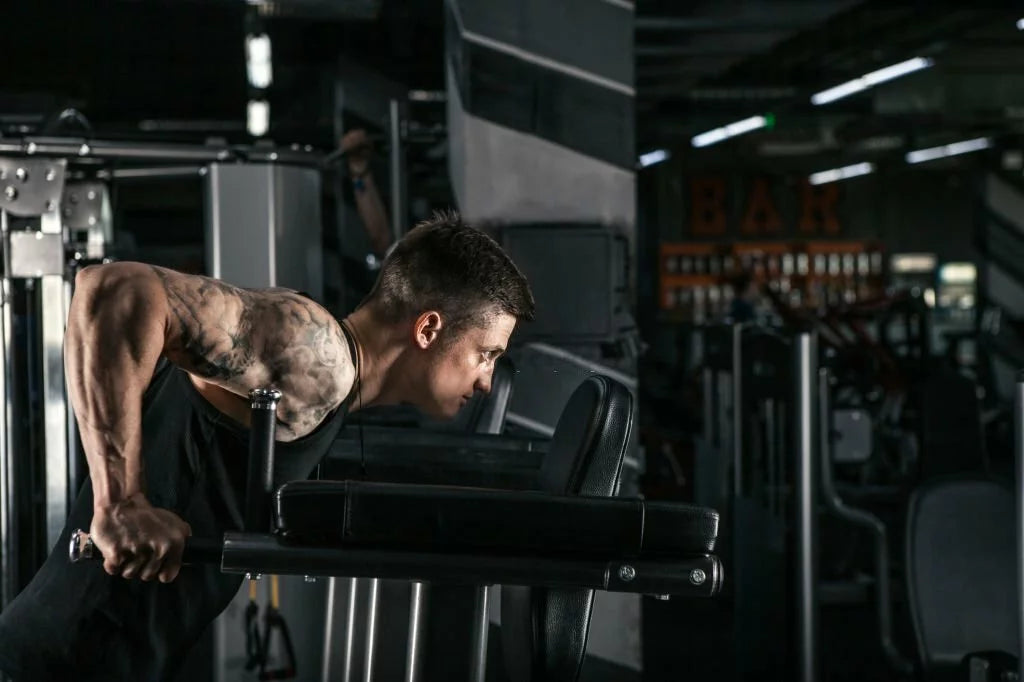Guide to Weighted Dips: Techniques, Benefits, and Safety Tips

Guide to Weighted Dips: Techniques, Benefits, and Safety Tips
Weighted dips, a more intense variant of the classic bodyweight dip, have gained immense popularity in gyms worldwide, and for good reason. By adding extra weight to the traditional dip on a dip station, they amplify the challenge and the rewards.
Tip: Use our dip station attachment on any one of our power racks for home gym or squat racks for the best upper body workout experience.
Primarily targeting the triceps, chest, and anterior deltoids, weighted dips are a powerhouse for upper body development. But their benefits extend beyond just muscle engagement. What sets weighted dips apart is their ability to simultaneously enhance strength, muscle mass, and functional fitness. They're not just another exercise; they're a cornerstone movement for serious fitness enthusiasts.
Whether you're looking to build impressive upper body strength or just add some variety to your workout routine, weighted dips offer a unique blend of intensity and effectiveness. So, let's dive in and explore everything about this versatile exercise, from its rich history to the various ways you can incorporate it into your fitness journey.
Understanding Weighted Dips
At its core, a weighted dip is a compound exercise that involves lifting your body while carrying additional weight. This can be achieved through various means like a dip belt, which allows weights to be suspended from the waist, or a weighted vest, which evenly distributes the added weight across the torso. The basic movement remains the same as a regular dip – lowering and lifting your body by bending and extending the elbows – but the added weight significantly increases the intensity.
The history of dips, and by extension weighted dips, is deeply rooted in calisthenics and strength training. Originally performed as a bodyweight exercise, tricep dips have been a staple in physical fitness regimes for decades. The evolution of adding weight transformed them from a purely bodyweight exercise into a more challenging and versatile strength-building movement.
For newcomers, the variety of equipment options for weighted dips can seem overwhelming. The dip belt is a popular choice, known for its simplicity and effectiveness. It's ideal for adding significant weight, making it a favorite among seasoned athletes. Weighted vests, on the other hand, offer a more balanced distribution of weight and are excellent for those who prefer a more evenly distributed load or are working on advanced variations.
Regardless of the equipment, the essence of weighted dips remains the same – to challenge your upper body like never before. As we delve deeper into this guide, you'll discover the immense benefits and the proper techniques to make the most out of this powerful exercise.
Proper Technique and Form for Weighted Dips
Mastering the technique of weighted dips is crucial not only for reaping maximum benefits but also for preventing injuries. Here's a step-by-step guide to ensure you're performing this exercise correctly:
Starting Position: Begin by securing the additional weight to your dip belt or putting on your weighted vest. Approach the dip bars and grip them firmly. Hoist yourself up to a starting position where your arms are straight, supporting your entire body weight.
Descent: Inhale as you slowly lower your body, keeping your elbows slightly tucked in towards your body. The descent should be controlled and steady. Lower yourself until your shoulders are slightly below your elbows, or you feel a good stretch in your chest and shoulders.
The Lift: Exhale and push your body back up to the starting position. Focus on using your triceps, chest, and shoulders to lift yourself. The movement should be smooth and controlled.
Posture: Keep your body as upright as possible throughout the exercise. Avoid leaning forward excessively, as this can put undue stress on your shoulders and reduce triceps engagement.
Repetition: Repeat the movement for the desired number of repetitions.
Common Mistakes and Corrections
Flaring Elbows: Keep your elbows slightly tucked in. Flaring them out wide puts excessive strain on your shoulder joints.
Going Too Low: Descending lower than your flexibility allows can cause shoulder strain. Only go as low as comfortable.
Rushing the Movement: Avoid using momentum to lift yourself. Focus on a controlled movement to engage the correct muscles effectively.
Incorporating Weighted Dips into Your Workout Routine for Beginners
For beginners, starting with weighted dips can be intimidating. Here’s how to ease into them:
Start with Bodyweight: Before adding weight, ensure you can perform bodyweight dips with good form. Aim for 10-15 solid bodyweight dips before introducing additional weight.
Gradual Weight Addition: Begin with a lighter weight that allows you to perform the exercise with proper form. Even 5-10 pounds can make a significant difference.
Frequency and Repetitions: Initially, include weighted dips once or twice a week in your routine. Aim for 2-3 sets of 6-8 repetitions, gradually increasing as you get stronger.
Progressive Overload: As you become more comfortable, gradually increase the weight while maintaining proper form. This could be adding a small amount of weight each week or every other week.
Workout Integration: Incorporate weighted dips into a balanced upper-body routine. They pair well with exercises like pull-ups, bench presses, and rows, offering a comprehensive workout.
Listen to Your Body: Pay attention to how your body feels. If you experience pain, especially in the shoulder area, reassess your technique, reduce the weight, or give yourself more rest.
Variety: Once you're comfortable with the standard weighted dip, experiment with variations like using different grips (narrow or wide) or altering the angle of descent to target different muscle groups.
By following these guidelines, beginners can safely and effectively incorporate weighted dips into their workout routines, gradually increasing intensity and complexity as their strength and confidence grow.
Safety Tips and Injury Prevention for Weighted Dips
Performing weighted dips safely is paramount to avoid injuries and ensure a productive workout. Here are essential safety tips:
Warm-Up Properly: Before attempting weighted dips, engage in a thorough warm-up routine to prepare your muscles and joints. This could include light cardio and dynamic stretches focusing on your upper body.
Start with Light Weights: Especially if you're new to weighted dips, begin with lighter weights and gradually increase as your strength improves.
Maintain Proper Form: As emphasized earlier, correct form is crucial. Poor form not only reduces the effectiveness of the exercise but also increases the risk of injury.
Listen to Your Body: If you feel any unusual pain or discomfort, especially in the shoulder or elbow joints, stop immediately. Persistent pain may require consultation with a healthcare professional.
Avoid Overtraining: Give your muscles time to recover. Overtraining can lead to injuries and muscle fatigue.
Use a Spotter or Assistance Equipment: When trying heavier weights, use a spotter for safety. Alternatively, use assistance equipment like a dip machine to help control the weight.
Advanced Techniques and Variations for Weighted Dips
For those who have mastered the basic weighted dip, here are some advanced variations:
Varying Grip Width: Altering the grip width can shift the focus of the exercise to different muscle groups. A narrower grip targets the triceps more, while a wider grip focuses on the chest.
Adding Movement: Incorporate movements like leg raises or knee tucks at the bottom of the dip to engage the core.
Paused Reps: Pause at the bottom of the dip for a few seconds before pushing back up to increase intensity.
Supersetting: Combine weighted dips with another exercise, like push-ups or pull-ups, for a more intense workout.
Pyramid Sets: Gradually increase the weight with each set, then decrease the weight, allowing for a mix of strength and endurance training.
Incorporation into Workout Routine
Use these variations once you're comfortable with standard weighted dips.
Include them in a comprehensive upper body workout, ensuring a balance between pushing and pulling exercises.
Monitor your body's response to these advanced techniques, adjusting as necessary.
Final Thoughts
Weighted dips are a highly effective exercise for building upper body strength and muscle mass. They offer versatility to suit various fitness levels, from beginners to advanced athletes. Remember, the key to success with weighted dips lies in proper technique, gradual progression, and listening to your body to avoid injuries.
Keep these tips and techniques in mind. And, as always, consider consulting with a fitness professional to tailor a routine that's best suited to your individual needs and goals. Happy dipping!












